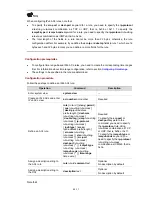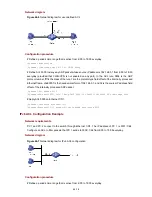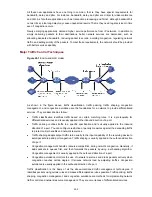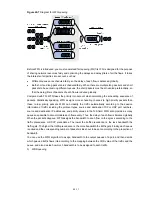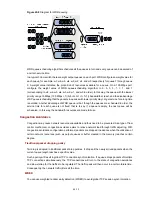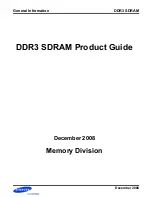
45
QoS Configuration
Wh n configuring QoS, go to these sections
e
for information you are interested in:
z
Overview
z
QoS Supported By Switch 4500 Series
z
QoS Configuration
Displaying and Maintaining QoS
z
Configuration Examples
z
QoS
Introd
pt concerning service demand and supply. It reflects the ability to
etwork may provide various services.
Generally, QoS refers to the ability to provide improved service by solving the core issues such as delay,
arding process.
Tradi
service policy is known as
t loss ratio, reliability, and so on.
The traditional Best-Effort service policy is only suitable for applications insensitive to bandwidth and
New
e part of the Internet. The
terprise users expect to connect their regional branches together using
Overview
uction to QoS
Quality of Service (QoS) is a conce
meet customer needs. Generally, QoS does not focus on grading services precisely, but on improving
services under certain conditions.
In an internet, QoS refers to the ability of the network to forward packets. The evaluation on QoS of a
network can be based on different aspects because the n
jitter, and packet loss ratio in the packet forw
tional Packet Forwarding Service
In traditional IP networks, packets are treated equally. That is, the FIFO (first in first out) policy is
adopted for packet processing. Network resources required for packet forwarding is determined by the
order in which packets arrive. All the packets share the resources of the network. Network resources
available to the packets completely depend on the time they arrive. This
Best-effort, which delivers the packets to their destination with the best effort, with no assurance and
guarantee for delivery delay, jitter, packe
delay, such as WWW, E-mail and FTP.
Applications and New Requirements
With the expansion of computer network, more and more networks becom
Internet gains rapid development in terms of scale, coverage and user quantities. More and more users
use the Internet as a platform for their services and for data transmission.
Besides the traditional applications such as WWW, E-mail, and FTP, new services are developed on the
Internet, such as tele-education, telemedicine, video telephone, videoconference and
Video-on-Demand (VoD). En
VPN techniques for coping with daily business, for instance, accessing databases or manage remote
equipments through Telnet.
45-1






